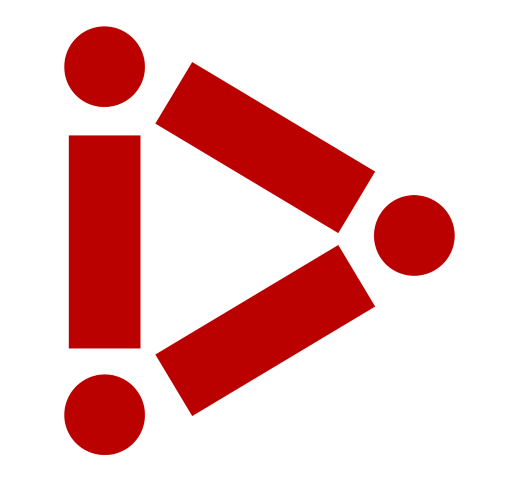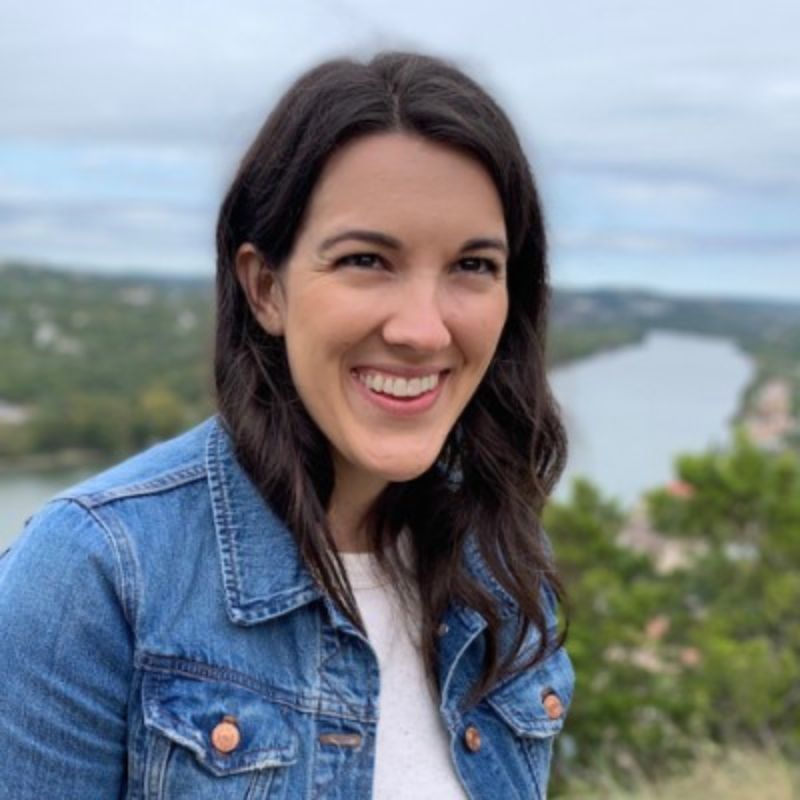Design Odyssey: Advocacy's Role in Charting One's Career
Ashley Banegas (MPD ’13) divined her path to design through self-advocacy and now guides clients and their products as an Experience and Strategy Consultant specializing in Service Design.
By Mary Kilcoyne
Banegas (MPD ’13) works as an Experience Consultant with a focus in Service Design at Bottle Rocket Studios, a Dallas-based consultancy that builds digital experiences and assists clients with business strategy, product, design, and technology services.
“Every day is a new challenge because I work with clients in all different industries. It’s kind of a continuation of what life was like at iii. We’re a project-based company so we’re not siloed into our different departments. I get to collaborate with engineers and product managers every day.”
Banegas provided the MIIPS Class of 2024 a taste of what it’s like to be Bottle Rocket clients. As part of the Integrated Product Development course, she remotely facilitated an Experience Blueprint workshop over several class sessions.
Her path to design, though, started in mechanical engineering, a byproduct of growing up surrounded by engineers and rocket scientists in New Mexico.
“I was told that design was the ‘frilly’ part of engineering. I got a taste of it, incorporating some human factor studies in a 'zero-gravity' biomechanics capstone project, but I wanted more. I wanted to be fully immersed in design, and I didn't know how to get there,” Banegas recalled.
Staying true to her dream, Banegas forged ahead in search of a postgraduate degree that would satisfy her interests and change her trajectory while leveraging her engineering degree.
“I was looking for a program that accepted engineers but didn’t put us in a box. Multi-disciplinary programs weren’t as common as they are today. This trend of having people from different backgrounds in the same program started here. The MIIPS program was a game changer.”
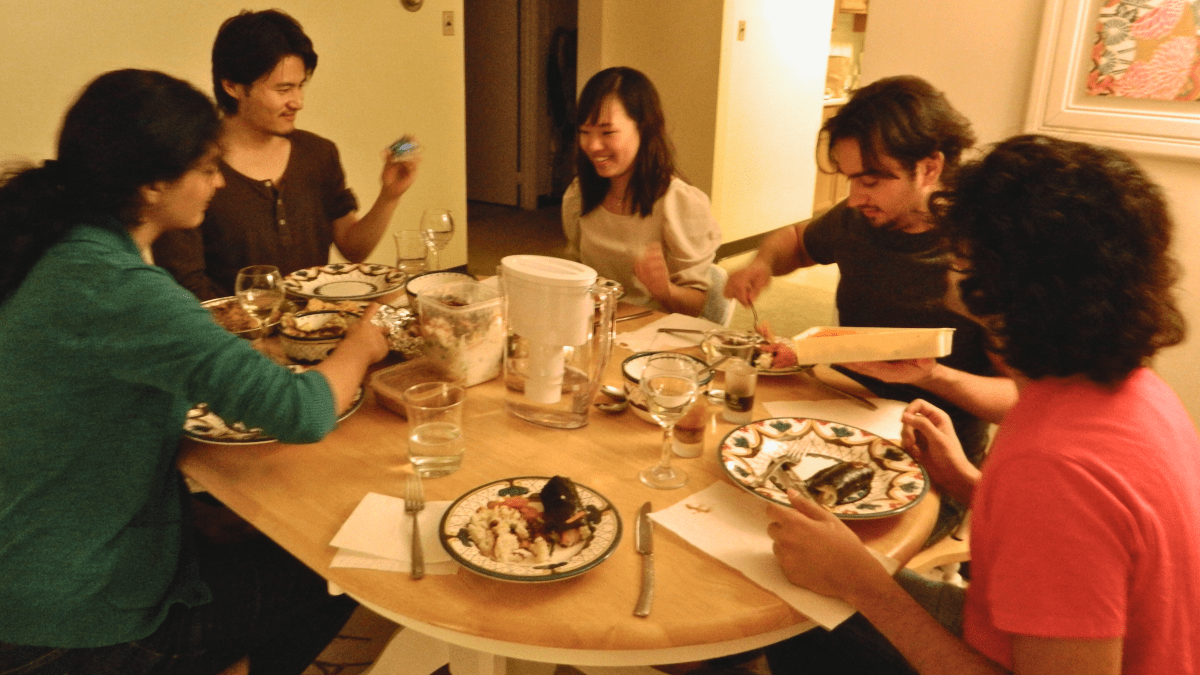
Today, Banegas still relies on the skills taught in classes like User Research Methods, such as perceiving and observing patterns and understanding what questions to ask and to whom to elicit truthful responses.
She had envisioned working with physical products after graduation but quickly realized that designing digital experiences has more widespread opportunity.
“I didn’t land a job in design right off the bat. It took me a few years of trying on different roles and collecting some professional skills before I settled into something that I truly enjoyed,” Banegas said.
After graduation, she joined telecommunications company Ericsson as a project manager. Self-advocacy won Banegas her next role at a “cool digital startup” in downtown Dallas.
She discovered the company online and felt compelled by the work, the environment, and the culture, so she pitched herself in a cold outreach to the company’s generic “hello@company” email address.
“I was hired for a delivery role and came to understand the ins and outs of digital design and development. I had a boss and mentor that took a chance on me and invested in my professional development, even encouraging me to do improv comedy to practice empathy and communication. By just having a minute of bravery and sending an email that I was nervous to send, I made a professional pivot,” Banegas shared.
“One of my biggest points of advice is to advocate for yourself. So send the email, make the call, send the Linkedin message – whatever it is. Do something that gives you that little boost of courage and just do it!”
After a year and with the support of a team of mentors, she pivoted to Bottle Rocket’s strategy and design department, finding her way, at last, to design.
A move to a new city interrupted her tenure with the company, but the pandemic and onset of Bottle Rocket’s “work from wherever” policy presented Banegas the opportunity to rejoin.
“After the pandemic shutdown, I stopped taking the physical aspect of gathering for granted. I started to shift my perspective and my projects into a more holistic understanding of what it means to provide an experience that connects people, on and off the screen.”
Catalyzed by the intense focus on digital interfaces and interactions induced by the pandemic and empowered by Bottle Rocket’s leadership to explore, Banegas dove into service design with a new perspective.
“Bottle Rocket has always done a level of service design, but now I’m focused on encouraging my colleagues and our clients to think about design in the context of a larger, holistic ecosystem. And, honestly, that includes advocating for changes that aren’t so digitally focused (like people or processes) in order to improve a brand experience.”
In addition to her coworkers and the collaborative culture, helping clients is one of the aspects that Banegas enjoys most about her job.
“This may be a weird metaphor, but it’s like you’re a midwife helping your client birth this new product or experience. Then, you send it out into the world, see it grow up, and thrive out in the wild while you move onto helping the next client do the same,” Banegas explained. “It keeps you on your toes, constantly learning because technology is shifting all the time, and no two experiences are the same. The added bonus is that this job comes with way fewer night shifts.”
MIIPSters Participate in Experience Blueprinting Workshop
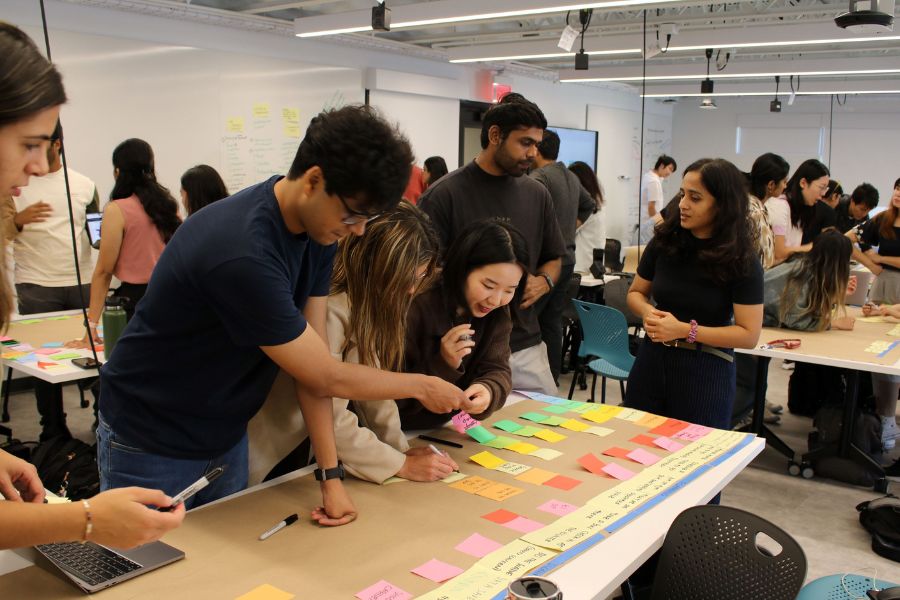
In the first part of the workshop, students learned about the method of experience blueprinting and the traits of a well-rounded problem solver. This aided them in the second half of the workshop where they put their new skills to the test in a group project.
WHAT IS EXPERIENCE BLUEPRINTING?
“The Experience Blueprinting workshop that we do with clients at Bottle Rocket (first developed by Practical by Design) is an easy, strategic entry into the larger world of service design. It’s a good way to practice a core method and see what it uncovers without launching into a big, expensive project. It helps put focus on what’s most important in order to move ahead with an action plan in an efficient way,” Banegas said.
In the realm of problem-solving, innovators learn many methods of approaching a challenge. To illustrate the workshop, Banegas used the examples of journey maps and service blueprints - two different visual communication tools that use qualitative and quantitative research as input, can be refined from low to high fidelity, and have "current" and "future" state counterparts.
Banegas defined experience blueprinting as an activity that sits between journey mapping and service blueprinting. It is a specific service design methodology that helps stakeholders across the business identify problems and opportunities within the business in order to develop practical and strategic action plans to address those areas.
Experience blueprints consider the biggest “big picture”. They take all interrelated parts of a wide ecosystem and consider how connections, improvements, and new ideas can strengthen the relationship between customer and brand consistently across the entire customer journey.
"My key takeway was how I could, as a product manager, enhance customer empathy using tools and learn the collaborative yet efficient nature of Experience Blueprint creation, which delivers long-term value in a short timeframe," Suvarsha Rai (MIIPS '24) said.
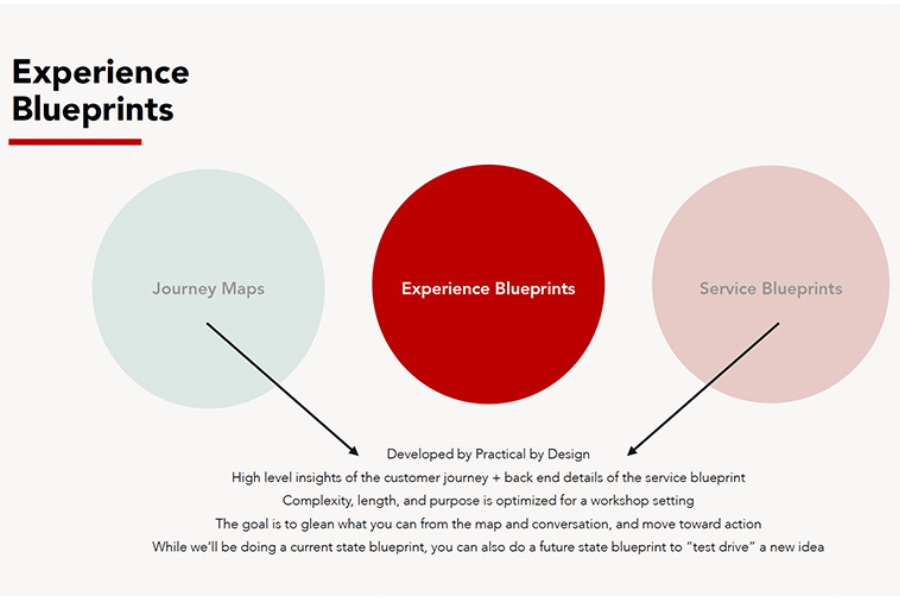
HOW DOES EXPERIENCE BLUEPRINTING WORK?
To put their new knowledge to the test, students were divided into nine groups of six to create experience blueprints of their own.
They began with a scenario and broke it down into steps or a journey. Then, they mapped the elements required to deliver that step or journey in the scenario. Next, they wrote down unknowns and notes about the situation, including data and metrics they would want to know more about for each step. They also identified each step’s pain points and opportunities. Finally, all of the details were synthesized into a final presentation, and the top problem (identified through the blueprinting activity) was prioritized.
"Ashley made it feel like a real client pitch. Within just one week, we accomplished a lot. We tackled a problem, effectively mapped it out, and synthesized our findings into a compelling business case. What stood out to me was the system-level thinking she encouraged us to embrace in such a short time," Krutin Kanumuri (MIIPS '24) shared.
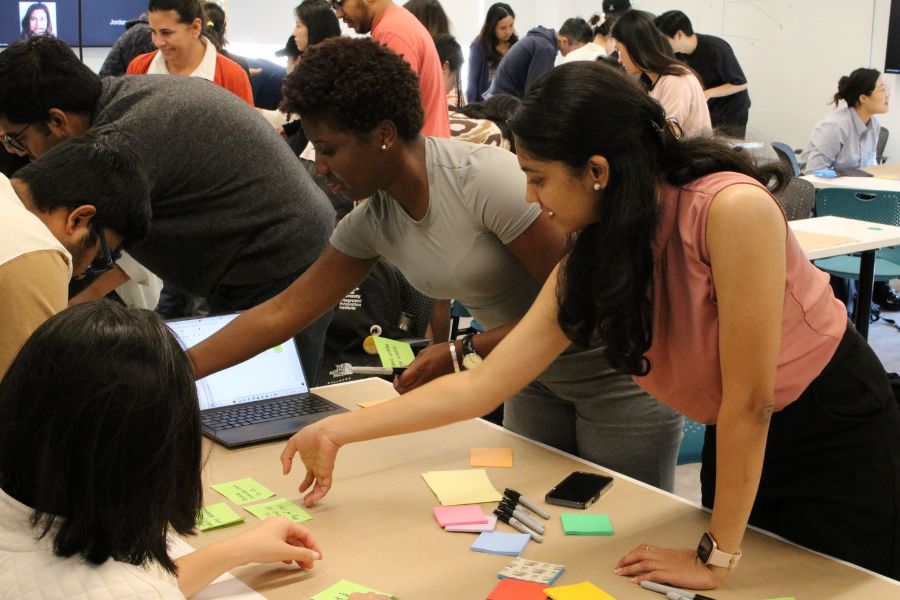
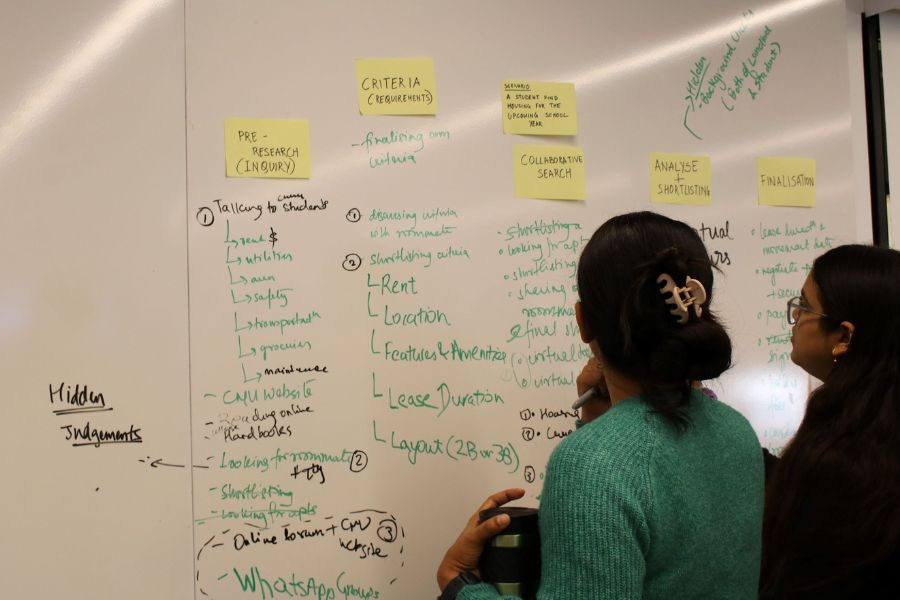
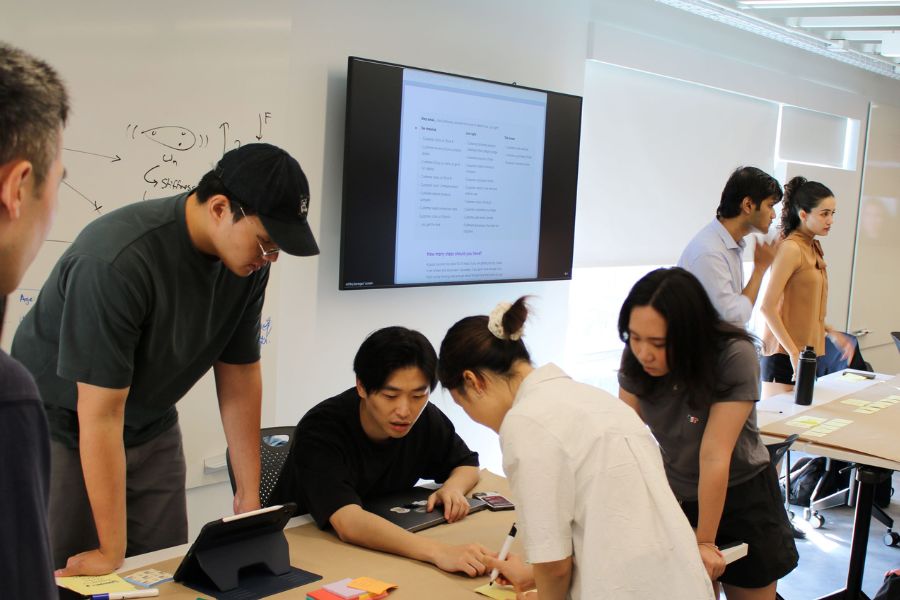
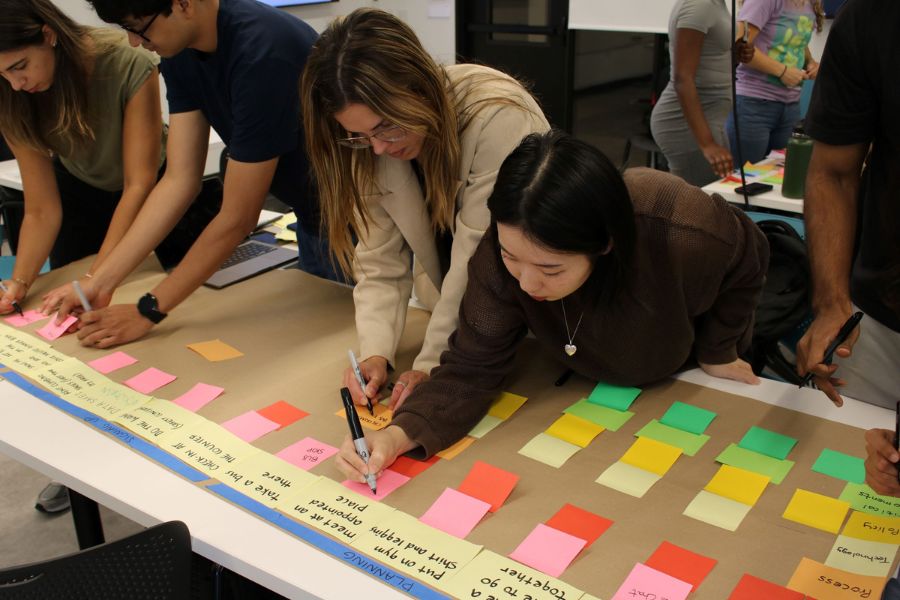
The Student Teams
Team 1
Eunice Yuan, Yimika Osunsanya, Krutin Kanmuri, Heena Barhate, Liz Kacpura, and Sahana Vishwanath
Problem Name
Unorganized Information During Course Registration
Problem Statement
In order to select courses to register for, students parse through information from many sources, such as websites, word of mouth, and course ratings. Students often spend many hours in this process. This situation causes increased stress levels, frustration with the institution, and a lack of confidence in their final decision.
Team 2
Ayushi Shah, Dev Vijh, Debeshi Ghosh, Mrigakshi Mishra, Nisarg Doshi, and Suvarsha Rai
Problem Name
Inefficient methods for reaching out to landlords for further details about available units and tour scheduling.
Problem Statement
Ineffective communication and consequent delay in reaching out to landlords for availability of units, house tours, and further details results in missed opportunities with respect to available rental houses.
Team 3
Luxi Yang, Shreya Nair, Tingyu Su, Moon Lou, Isabelle Qiu, and Sirao Song
Problem Name
University Heath Services current poorly-designed online booking experience decreases students' access to care.
Problem Statement
When booking an appointment on the UHS website, students find that the options provided under the "Reason for Visit" are very limited. Students are not able to choose the correct reason for visit, which causes confusion about UHS's capabilities and frustration.
This results in students having to call the office to book their appointment, which can be inconvenient as wait times are usually longer.
Team 4
Gina Xiao, Eugene Lin, Isha Raghuvanshi, Xinyi (Tessie) Tang, Jennifer Liu, and Heng Chang
Problem Name
Ensuring repayment after splitting the check.
Problem Statement
There is a need for a hassle-free system that could ensure timely and worry-free sharing of expenses within a group. People are hesitant to pay in the first place due to concerns about forgetfulness and lack of accountability.
Team 5
Nitya Mathur, Evan Goldberg, Vibhuty Gaggar, Victoria Vastis, Marcelo Decrescenzo, and Jordana Tinto
Problem Name
Registration on the Spotify App while transitioning from the free version to Premium.
Problem Statement
Inconvenience in the registration process causes less transitions to Spotify Premium, hence, if the process was simplified and gamified, Spotify will earn more revenue.
Team 6
Papim Dejakaisaya, Natapat Chotruchsakul, Kathy Gan, Scarlett Xie, Sherrie Guan, and Sri Lakshmi Pakhala
Problem Name
Hulu's Undesirable Account Creation Process.
Problem Statement
Hulu's account creation process makes it difficult for users to correct errors, does not offer visibility into their progress, does not allow navigation, and puts heavy cognitive load on the user, making it less desirable for people to sign up for Hulu's services.
Team 7
Aakash Dolas, Eashwari Samant, Nihaal Singh Adarsh, Prisilia Langi, Rujuta Parulekar, and Yingxin Zhang
Problem Name
Non-uniform student loan application processes across different banks.
Problem Statement
Lack of uniformity in the loan application process across banks leads to confusion, intimidation, or a sense of overwhelm amongst applicants leading them to identify alternate financing options, rethink program choices to fit their budget, or reconsider the decision to pursue graduate school altogether.
Team 8
Dora Zhang, Giovanni Natasha, Griselda Philiberta, Matthew Pranata, Mark Yan, and Nan Yi
Problem Name
The weak presence of Prime Video as a brand within the Amazon services.
Problem Statement
Due to the lack of original content and standalone brand identity, Prime Video remains as a companion service to Amazon and does not drive students' decisions to sign up for the free trial
Team 9
Krishna Kalla, Rex Pan, Amanda Manget, Daniela Decoud, Rishi Hiremath, and Anupreeta Agate
Problem Name
Beginner climbers lose motivation due to lack of guidance and don't feel competent/ accomplished.
Problem Statement
Lack of guidance on climbing techniques and processes poses a significant challenge for beginners attempting to climb. This is a critical problem as it leads to injuries and loss of motivation for the first-time climbers which results in them not enrolling for a membership.
